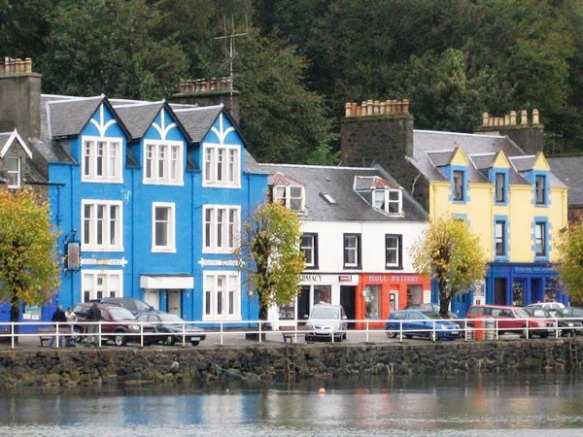When the ferry pulls into the bay in Tobermory on the Isle of Mull in Scotland, you can’t help but grin at the colorful buildings as they greet you from the waterfront.
People react to color. It triggers responses at the subconscious level—personal associations, memories, and vibrations. We express ourselves through the colors we wear and surround ourselves with. We’re irresistibly drawn to certain colors and repelled by others. Psychologists have found that colors affect our preferences, character, behavior, and personality. The world-famous psychological test—The Lüscher Color Test—bases color as indicators of basic personality traits.
Color also affects our response to food. For example, in fast food restaurants the décor is often designed around appetite-promoting colors which include red, yellow, and orange. We see these colors so often in marketing campaigns that we not only associate those colors with food, but with the idea of increasing the portion size on our plate. As a society we’ve come to refer to this as “super sizing.”
Each color has a variety of shades. For instance, pure colors are bright or high chroma. Muted colors are lower intensity than the pure colors. Shaded colors have even lower color intensity than muted colors. Every shade of color can speak volumes about your personal style, without you saying a word. And while color perception is highly personal and connects directly with individual memories and emotions, it has a universal language.
We’ve all heard the sayings: “Red with anger,” “Red-blooded,” “Yellow-bellied,” “Golden experience,” “Green with envy,” “Give the green light,” “Feeling blue,” “A black mood,” “White as sheep,” “White elephant,” and “A colorful character.”
Color has remarkable therapeutic benefit. The pineal gland secretes serotonin which has an uplifting effect. It helps us to stay aware and alert. It’s stimulated by daylight and the colors yellow, orange, and red.
Melatonin—a naturally occurring hormone that helps to regulate sleep and wake cycles—has a sedative effect. It’s stimulated by night and the colors green, blue, and purple. People suffering from Seasonal Affective Disorder (SAD)—a specific type of depression in winter months—have high levels of melatonin due to lack of sunlight. They respond well to therapy with a full-spectrum white light.
Color produces moods, feelings, and sensations that almost everyone recognizes. Many people use color to transform the place they live into a place they love. In each of the next seven “classes” we’ll take a close look at specific colors and how they can help to unleash the unlimited potential and possibility of different aspects of your fundamental nature.
“Whatever you are not changing, you are choosing.”
– Laurie Buchanan
www.HolEssence.com
Copyright © 2010 Laurie Buchanan — All Rights Reserved.

